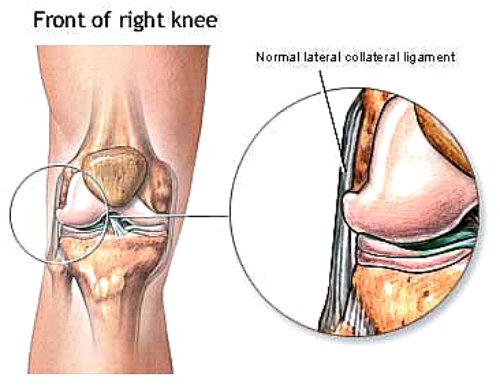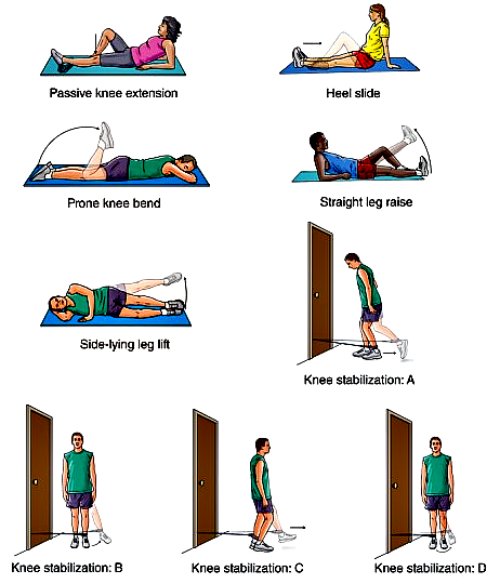LCL Injury Recovery

LCL Injury Recovery
LCL injury recovery time is needed after every Lateral Collateral Ligament sprain or tear.
When
it comes to LCL ligament injury, time is the best healing process, and
surgery is rarely required for treatment of common lateral collateral
ligament injuries.
Getting over LCL knee injury will need
proper time to heal, combined with treatment and exercises to
strengthen the Lateral Collateral Ligament before returning to any
activity.
Proper LCL sprain treatment will depend on how severe the Lateral Collateral Ligament injury is.
Whenever
an athlete feels like he/she has a knee injury, no matter what knee
ligament is in question, he/she should step off the field immediately and apply ice
over the injury.
Running in soccer may mask the real extent of the injury until the body actually cools down.
Injury
may feel less severe while the body is warm, and by staying on the
field and playing through mild knee pain, player can cause a much worse
injury of the LCL ligament, leading to much longer time to recover from
the injury.
I say this from personal experience; when you feel like something is wrong with the knee, simply trust your body and immediately step off the field.
Every LCL injury
treatment should start with letting the pain subside, use of RICE
method, working on knee mobility, followed by strengthening exercises.
Compressing the knee during LCL rehab is a great way to give additional support to the knee.
As I mentioned above, only very severe LCL ligament tear will require surgery, however each degree of the LCL tear treatment will require different LCL rehab steps to properly heal.
Time away from activity is the biggest factor for different severity rehabilitation.
LCL Injury Recovery - GRADE I
Grade I injury to the LCL ligament is caused by a mild sprain, that stretches the LCL ligament too far, causing pain when the ligament is touched or whenever the knee is fully bent.
Small swelling may occur as well.
LCL Injury Recovery Treatment:
- MOST IMPORTANT treatment for lcl injury is RESTING from any activity that involves running.
- Take 2-4 weeks to rest the knee.
- Apply RICE (Rest, Ice, Compress and Elevate) to accelerate the healing process.
- Anti-inflammatory medicine can help with swelling.
- Knee exercises will help with the mobility and strengthening of the LCL ligament.
LCL Injury Recovery - GRADE II
Grade II LCL knee ligament injury occurs with a more severe sprain or impact to the outside of the knee.
This leads to the LCL ligament to stretch beyond its limits, tearing some of the ligament in the process.
Grade II LCL Injury will follow with more severe pain, swelling and instability of the knee.
LCL Injury Recovery Treatment:
- Grade II LCL injury requires 4-6 weeks (or longer) rest from any activity that involves running.
- Use
of hinged knee brace in the early stages (first 2 weeks) for injured knee ligament support whenever the knee is bent.
- RICE method (Rest, Ice, Compress, Elevate).
- Use of anti-inflammatory medication to help with swelling.
- Knee exercises once the pain subsides will help with the mobility and strengthening of the injured LCL ligament.
Athletes will be able to return to their sport when there is no pain directly over the Lateral Collateral Ligament, or any symptoms of instability.
LCL Injury Recovery - GRADE III
Grade III LCL ligament injury is considered the most severe, as a complete tear of the LCL ligament occurs.
Grade III LCL injury major indicator is the instability of the knee and inability to walk as the knee feels loose and buckling under weight put on the leg.
Pain is not an indicator, and in many cases Grade II injury may feel much more painful than a Grade III complete tear of the LCL ligament.
Bruising and swelling can be expected instantly, with inability to walk.
Treatment for Grade III ligament tear:
- Use of crutches or a knee brace is recommended during the first couple weeks after the injury occurs.
- Immobilizing the knee should not last more than a week, because early range of motion will help in the healing process.
- Once able to bend the knee, athletes should start using the stationary bicycle.
- Walking with progression to jogging as the pain subsides and allows to do so.
- Use
of hinged knee brace is very helpful to keep the knee stable,
especially during the early stages of LCL Grade III rehabilitation.
- Use of anti-inflammatory medication to help with swelling.
- RICE (Rest, Ice, Compress, Elevate) to help with faster recovery.
- Knee exercises to strengthen the LCL ligament 4 weeks after an LCL tear.
- Athletes
will usually need 3 - 6 months before returning to the sport, and should
only return when there is no pain in the LCL ligament area or any instability noticeable.
- With Grade III LCL ligament injury, IT IS BEST TO SEEK A PROFESSIONAL OPINION.
Grade III LCL ligament injury may include other knee ligaments being injured, so SEEING A DOCTOR is crucial for long term recovery of the knee.
For more information on knee injuries and rehabilitation visit LCL Ligament Sprain and Treatment.
LCL Rehab Exercises

| Soccer Related Injuries & More |
|---|
| ACL Injuries ACL or Anterior Cruciate Ligament is one of four knee ligaments holding the knee joint together. |
| ACL Injury Recovery ACL Injury Recovery will be needed after every ACL ligament tear or mild sprain. |
| Ankle Sprain Treatment Causes for ankle sprain can range from playing sports and forcefully rolling the ankle to just taking a walk in the park and twisting your ankle when stepping down from a curb :( |
| Common Soccer Injuries I wanted to create one web page with information on common soccer injuries and what these injuries feel like so that you can sometime recognize what is going on when it does happen to you or your players. |
| Hamstring Exercises Many athletes and regular people have hurt their hamstring at one point in their life and know how discomforting a hurt hamstring can feel. |
| Treatment for Injured Hamstring Hamstring injury treatment will vary depending on the severity of the injury. |
| Hamstring Injury Hamstring muscle injuries occur very frequently in athletes participating in various physically demanding sports that require sprinting and sudden change of movement and speed. |
| Hamstring Stretches Stretching the hamstring muscles is very important for our overall health as it reduces lower back pain and gives us strong and lean hamstrings that will help with our lower body range of motion. |
| High Ankle Sprain Ankle Syndesmosis injuries are often referred to what people call high ankle injury due to ankle swelling and ankle joint pain in the ligaments above the ankle. |
| How To Tape Your Ankle Ankle taping is a big part of preventing ankle injury for players participating in any type of sport where running and change of direction is required, such as soccer, football, basketball etc. |
| Knee Injuries in Soccer Knee injuries are very common in sports that require running and change of direction. Soccer is one of many sports where ligament injuries have a chance to sideline the player for longer periods of time. |
| LCL Knee Injury LCL (lateral collateral ligament) is one of the four knee ligaments holding the knee in place. |
| LCL Injury Recovery When it comes to LCL ligament injury, time is the best healing process and surgery is rarely required for treatment of common lateral collateral ligament injuries. |
| MCL Knee Injury MCL or Medial Collateral Ligament is one of the FOUR major ligaments that hold the knee together preventing it from sliding left and right or back and forth. |
| MCL Injury Recovery MCL rehab is needed after an MCL ligament injury and time is the best friend in getting over the MCL knee injury. |
| PCL Knee Injury PCL ligament crosses with the ACL ligament preventing our knee from moving back and forth. |
| PCL Injury Recovery PCL injury rehab will be different depending on the level or degree of knee injury suffered. |
| Ankle Injury Most sport players have twisted their ankle at least once considering that rolled ankle is one of the top sport injuries so I decided to cover everything about ankle sprain in this article. |
| Concussion Symptoms What is a concussion? Concussion is a traumatic head injury that occurs from mild or severe blow to the head. |
| Concussion Treatment Following a concussion, rest is the best answer for concussion treatment. |